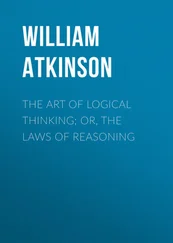III. The Method of Residues : “When in any phenomena we find a result remaining after the effects of all known causes are estimated, we may attribute it to a residual agent not yet reckoned.”
IV. The Method of Concomitant Variations : “When a variation in a given antecedent is accompanied by a variation of a given consequent, they are in some manner related as cause and effect.”
Atwater says of the above: “When either of these criteria is found, free from conflicting evidence, and especially when several of them concur, the evidence is clear that the cases observed are fair representatives of the whole class, and warrant a valid universal inductive conclusion.”
Argument based upon Cause and Effect may be employed in arguing the probability of the occurrence of a certain effect arising from an admitted cause; or in arguing the probability of the occurrence of a certain effect arising from an admitted cause; or in arguing the probability of the existence of a certain precedent cause by reason of a certain cause to effect; the other from effect to cause. Thus we may argue that from the admitted existence of certain casual agencies, belonging to a class of causes which have resulted in certain effect in the past, there will arise certain effects in the future. As for example, we may argue that as John Smith is drinking to excess, and that this cause has resulted in drunkenness and poverty in other cases in the past, therefore, John Smith is likely to become a drunkard and a pauper in the future. Or, that undue familiarity existing in a certain case, and familiarity having been known to “breed contempt” in the past, therefore, contempt is apt to arise from the present manifestation of familiarity. Likewise, we may argue that from the existence of certain admitted effects, there must have existed a certain precedent cause. Thus, we may argue that there being an egg before us, and from the fact that eggs have always been known to have been laid by birds or fowls, therefore, the present egg must have been laid by a bird or fowl. Or, that a coin having disappeared from a drawer, and persons having been known to steal coins in the past, therefore, some person must have stolen the coin. The doctrine of Causation, or the theory that nothing exists with a cause, and that everything proceeds from a precedent cause, and must, in itself, be the cause of a subsequent effect, is well grounded in human reason and experience, and argument based thereon is of the strongest character. The question of “motive” belongs to this form of argument.
Argument based upon Analogy is sometimes known as “Argument from Resemblance,” or “Argument from Example.” It is based upon the general principle or axiom that: “ If two or more things resemble each other in many points, they will probably resemble each other in many other points. ” The principle involved in this form of Argument may be gathered from the following quotations from two well-known authorities:
Jevons says: “If I see a machine with boiler, cylinder, air-pump, piston-rod, crank, and other parts exactly resembling those of a steam-engine, I do not hesitate to call it a steam-engine, to assert that it has a piston, valves, and other hidden parts, like all steam engines. It is in the same way that we reason about the substance of which anything is made. If a person offers me a shilling as change, how can I be sure that it is a good shilling, and made of silver? All that I can do is to examine the coin, and observe whether it has a fine pure white lustre where the surface is rubbed; whether there is in other parts of the surface the black tarnish peculiar to silver; whether the coin seems to be hard, and gives a sharp ringing sound when thrown down. If it has all these characters and, moreover, has a good impression exactly like that seen on other shillings issued from the mint, then it is doubtless made of silver, and is a true shilling, that is to say, it will show all the other properties of standard silver, when examined in a manner suited for showing them.”
Reid says: “We may observe a very great similitude between this earth which we inherit, and the other planets, Saturn, Jupiter, Mars, Venus and Mercury. They all revolve around the sun, as the earth does, although at different distances and in different periods. They borrow all their light from the sun, as the earth does. Several of them are known to revolve around their axis like the earth, and by that means have like succession of day and night. Some of them have moons, that serve to give them light in the absence of the sun, as our moon does to us. They are all, in their motions, subject to the same law of gravitation as the earth is. From all this similitude it is not unreasonable to think that these planets may, like our earth, be the habitation of various orders of living creatures. There is some probability in this conclusion from analogy.”
Argument based upon Analogy is quite popular, and in many cases it is valid. From the very nature of things we are compelled to resort to this form of reasoning and expression in the absence of the direct proof of positive evidences of the senses covering the entire proposition or points at issue. As Brooks says: “This principle is in constant application in ordinary life and in science. A physician visiting a patient, says this disease corresponds in several particulars with typhoid fever, hence it will correspond in all particulars, and is typhoid fever. So, when a geologist discovers a fossil animal with large, strong, blunt claws, he infers that it procured its food by scratching or burrowing in the earth. It was by analogy that Dr. Buckland constructed an animal from a few fossil bones, and, when subsequently the bones of the entire animal were discovered, his construction was found to be correct.”
But there is a limit to reasoning by Analogy, and the argument based thereon. There is a great danger of falling into the fallacies connected with this form of reasoning—and, in fact, many speakers deliberately advance these fallacies hoping thereby to deceive and delude their hearers. Jevons says: “Reasoning by analogy is found to be a very uncertain guide. In some cases unfortunate mistakes are committed. Children are sometimes killed by gathering and eating poisonous berries, wrongly inferring that they can be eaten, because other berries, of a somewhat similar appearance, have been found agreeable and harmless. Poisonous toadstools are occasionally mistaken for mushrooms, especially by persons not accustomed to gather them. * * * The beaten dog fears every stick, and there are few dogs which will not run away when you pretend to pick up a stone, even though there be no stone to pick up.”
Brooks says: “The argument from Analogy is plausible, but often deceptive. Thus to infer that since American swans are white the Australian swan is white, gives a false conclusion, for it is really black. So to infer that because John Smith has a red nose, and is a drunkard, that Henry Jones who has also a red nose is also a drunkard, would be a dangerous inference. * * * Conclusions of this kind, drawn from analogy, are frequently fallacious. Mandeville uses the following argument against popular education: ‘If the horse knew enough, he would soon throw his rider.’ He intends to imply two pairs of related terms; thus ‘As the horse is to the rider, so are the people to their rulers;’ which is, of course, a fallacy, since the relations are not similar.”
Hill says: “* * * the danger lies in making a hasty generalization from insufficient data and ignoring whatever supports an opposite conclusion. This fallacy is committed by those who argue from the examples of Franklin and Lincoln that men who do not go to college are more likely to succeed in life than men who do, and by those who argue from a few instances of the use or non-use of tobacco, that marriage or celibacy conduces to a long life, that a quick temper goes with red hair, or good nature with blue eyes, that a college degree implies scholarship.”
Читать дальше












